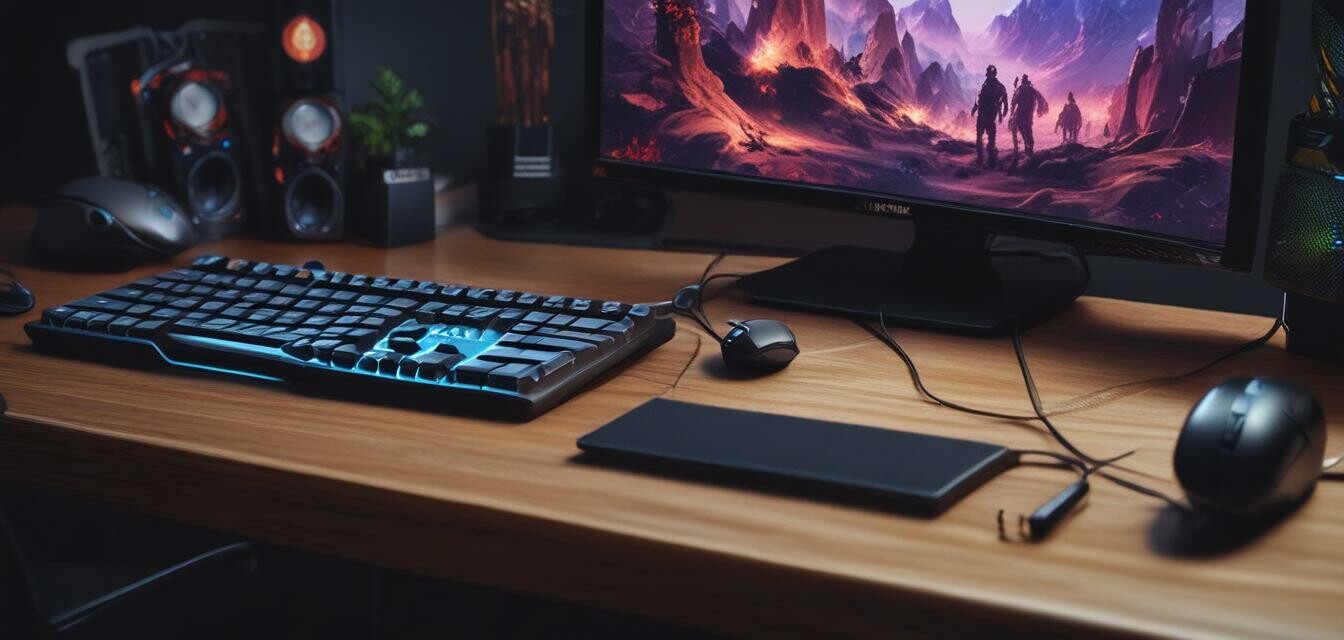
Budgeting for your first gaming setup
Key Takeaways
- Identify your gaming needs and budget.
- Prioritize essential components like TV, PC, and peripherals.
- Consider potential future upgrades.
- Take advantage of sales and discounts.
- Keep an eye on performance metrics to choose the right equipment.
Building your first gaming setup can be daunting, especially when it comes to budgeting. It’s essential to balance your desire for high-end gear with your financial limitations. This article offers practical tips to help you effectively budget for your gaming experience.
Understanding your gaming needs
Before diving into budgeting, you need to understand what you will be using your setup for. Consider the types of games you play—do they require higher graphics processing, or are they less demanding? Here's a brief outline to help clarify your needs:
| Game Type | Essentials Needed |
|---|---|
| Casual Gaming | A decent TV and basic gaming peripherals. |
| Competitive Gaming | High refresh rate display, low-latency peripherals, and a capable PC. |
| High-end Gaming | 4K monitor/TV, high-performance graphics card, and advanced audio equipment. |
Setting your budget
Once you understand your gaming needs, it's time to set a budget. Here’s how to go about it:
- Assess your total available funds.
- Allocate funds for essential components like a gaming TV, PC, and peripherals.
- Consider secondary costs such as furniture and decorations.
- Leave space in your budget for potential upgrades in the future.
Breaking down your budget
The following table shows a sample budget breakdown for a first-time gaming setup. This can help you evaluate how to allocate your funds effectively.
| Component | Estimated Cost |
|---|---|
| Gaming TV | $700 |
| Gaming PC | $1000 |
| Keyboard and Mouse | $100 |
| Gaming Chair | $200 |
| Miscellaneous Accessories | $150 |
| Total | $2300 |
Prioritizing your purchases
When you’re on a budget, it’s vital to prioritize what you need most. Start with the key components:
- Gaming TV or Monitor: The display is the centerpiece of your setup.
- PC or Console: Choose one based on the games you wish to play.
- Peripherals: A comfortable keyboard, mouse, and headphones can elevate your experience.
Shopping smart
To save money, keep an eye on sales and consider these tips:
Shopping Tips for Beginners
- Sign up for newsletters from gaming retailers to receive alerts on sales.
- Use price comparison tools to find the best deals.
- Consider refurbished or open-box items to save money.
- Buy in off-peak seasons when discounts are more prevalent.
- Look for bundles that offer multiple components at a discount.
Future upgrades
Once your initial setup is complete, you may want to consider future upgrades. Keep an eye on your performance needs and budget accordingly. These could include:
- Higher resolution displays for better clarity.
- Upgraded audio systems for immersive sound.
- Additional storage to keep your gaming library organized.
Conclusion
Budgeting for your first gaming setup doesn't have to be overwhelming. By understanding your needs and breaking down your costs, you'll find a way to enjoy a high-quality gaming experience without breaking the bank. With a clear budget and smart shopping strategies, you're well on your way to creating a gaming setup that suits your style and finances.
Pros
- Allows for a personalized gaming experience.
- Establishes good financial habits early on.
- Potential for future adjustments and upgrades.
Cons
- Initial investment can be high for quality gear.
- Possibility of impulse purchases that exceed budget.
- May require research to make informed choices.
